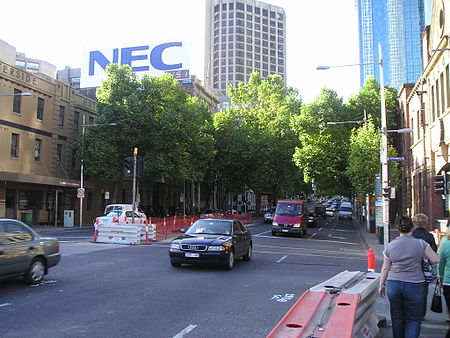King Street, Melbourne
Melbourne City CentreStreets in MelbourneUse Australian English from March 2018

King Street is a main road in the central business district of Melbourne, Australia. It is considered a key hub of Melbourne's nightlife and is home to many pubs, nightclubs, restaurants, and adult entertainment venues.Part of the original Hoddle Grid laid out in 1837, the road has become a main traffic thoroughfare connecting Southbank and North Melbourne through the city centre. King street is named for Captain Philip Gidley King, the third Governor of New South Wales.
Excerpt from the Wikipedia article King Street, Melbourne (License: CC BY-SA 3.0, Authors, Images).King Street, Melbourne
King Street, Melbourne West Melbourne
Geographical coordinates (GPS) Address Nearby Places Show on map
Geographical coordinates (GPS)
| Latitude | Longitude |
|---|---|
| N -37.8122 ° | E 144.9538 ° |
Address
King Street (Princes Highway)
King Street
3003 Melbourne, West Melbourne
Victoria, Australia
Open on Google Maps






